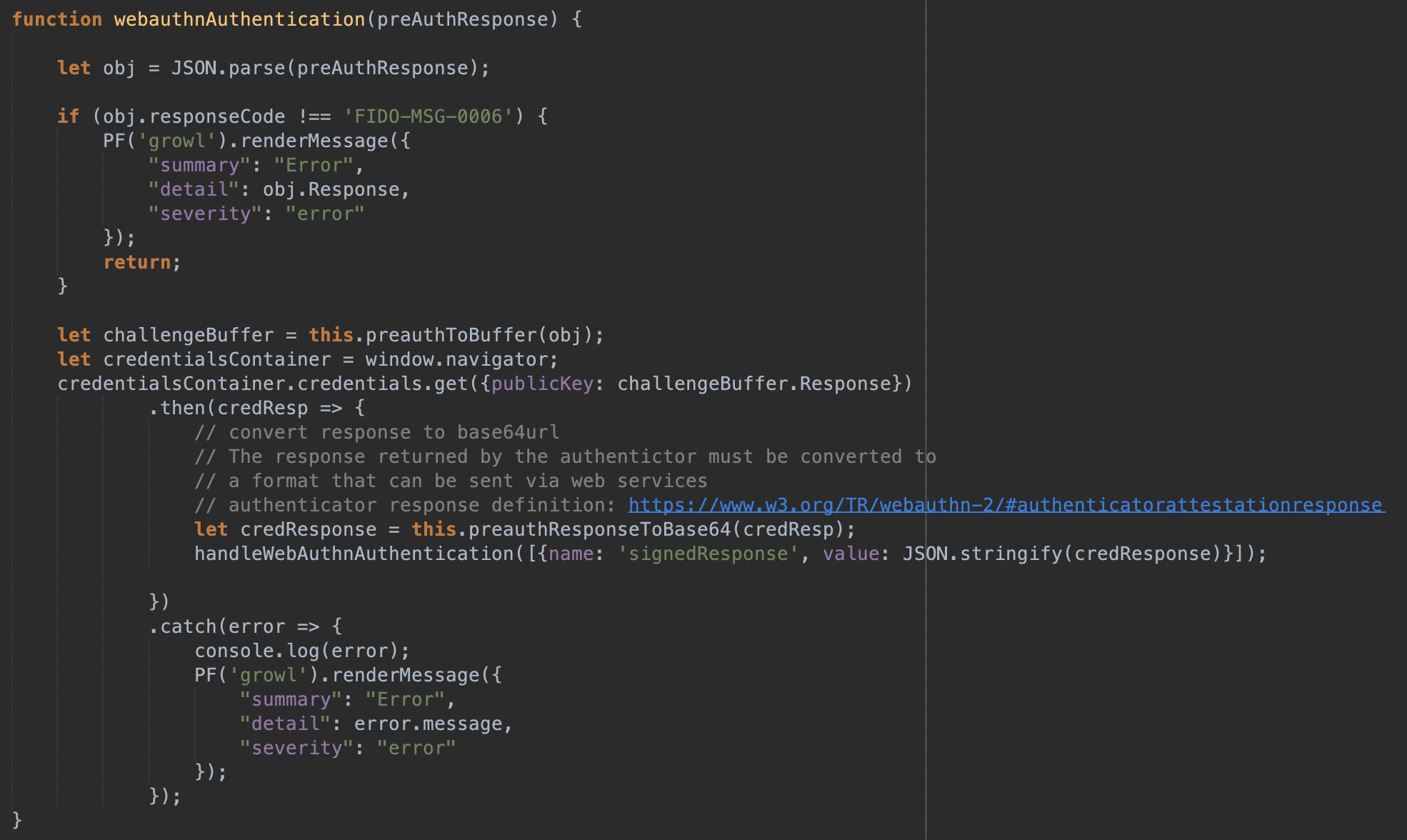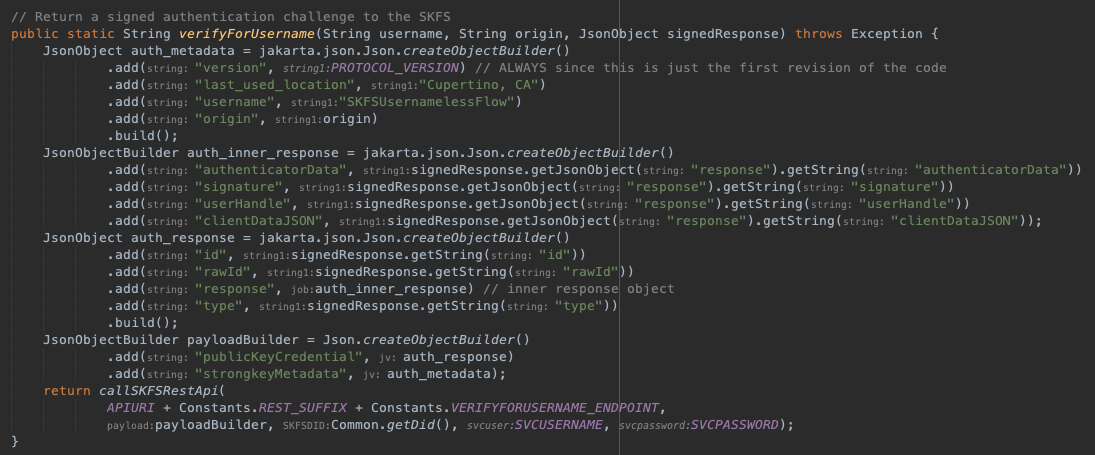- Release Notes
- Introduction
- Installation
- SKFS Installation Checklist
- Standalone Installation
- Clustered Installation
- Dockerized Installation
- Install HAProxy Load Balancer
- Upgrading SKFS
- Upgrading to SKFS 4.16.0
- Upgrading to SKFS 4.15.1
- Upgrading to SKFS 4.15.0
- Upgrading to SKFS 4.14.0
- Upgrading to SKFS 4.13.2
- Upgrading to SKFS 4.12.0
- Upgrading to SKFS 4.11.0
- Upgrading to SKFS 4.10.0
- Upgrading to SKFS 4.9.0
- Upgrading to SKFS 4.8.0
- Upgrading to SKFS 4.7.0
- Upgrading to SKFS 4.6.0
- Upgrading to SKFS 4.5.0
- Back
- Simulating Node Failures
- Removal
- Back
- Administration
- Operations
- Security
- Operating System
- Policy
- SKFS Policy Module (PM)
- JSON Schema
- Minimal (Any Hardware Authenticator)
- Moderate (Specific Authenticators)
- Strict (All Biometric Devices)
- Strict (Android SafetyNet)
- Restricted (TPM)
- Restricted (Android)
- Restricted (Apple PassKey)
- Restricted (FIPS)
- MetaDataService (MDS)
- FIDO Policy Options
- Back
- Back
- Configuration
- CLI Tool
- FIDO Operations (skfsclient)
- Admin Operations (skfsadminclient)
- Ping SKFS (P)
- Get Policy (GP)
- Create Policy (CP)
- Update Policy (UP)
- Delete Policy (DP)
- Get Configuration (GC)
- Update Configuration (UC)
- Delete Configuration (DC)
- Update Username (UU)
- Get User Keys (GUK)
- Add ROR (AR)
- Get ROR (GR)
- Update ROR (UR)
- Update and disable ROR (UDR)
- Add DAL Target (ADT)
- Get DAL Target (GDT)
- Update DAL Target (UDT)
- Update DAL target and disable (UDTD)
- Add x509fingerprint (ADFP)
- Update x509fingerprint (UDFP)
- Update x509fingerprint and disable (UDFPD)
- Back
- Back
- SSO
- Back
- How To ...
- Add an Additional Server to the SKFS Cluster
- Create and add new alias
- Debug Replication Issues
- Manage FIDO Metadata Service (MDS)
- Manage Keystores or Certificates
- Manage DAL
- Manage ROR
- Manage SKFS Policy
- Manage SKFS Configuration
- Perform SKFS Operations
- Replace a Server in the SKFS Cluster
- Back
- Troubleshooting
- Standalone Node Troubleshooting Guide
- Clustered Node Troubleshooting Guide
- Error Codes and Their Meanings
- Solutions for Known Issues
- Certificate not found in truststore while Authentication in Discover
- CORS Missing Allow Origin or ERR_CERT_AUTHORITY_INVALID
- Json could not be parsed : Invalid 'request type'
- Json could not be parsed : Policy requires counter
- JWT CIP 192.168.x.xx does not match: [localhost]]]
- mysql binary does not exist or cannot be executed
- Remote server does not listen for requests on [localhost:4848]
- RPID Hash invalid - Does not match policy
- This security key doesn't look familiar. Please try a different one.
- Back
- Back
- Developer
- Sample Applications
- SKFS API
- Build SKFS from source
- Tutorial
- Discoverable Credentials
- Related Origins Requests (ROR)
- Digital Asset Links (DAL)
- Back
- Demos
- MFA Implementations
Authenticating a user’s FIDO credential is handled in four(4) steps:
-
In the first step after a user submits their registration, a preauthenticate() webservice request is sent to SKFS; this returns a challenge and other directives/hints (inside PublicKeyCredentialCreationOptions) to serve as input to the WebAuthn API built into browsers:

- In the second step, the challenge (and other directives/hints) are passed in to the browser’s WebAuthn API – specifically, the window.navigator.credentials.get method - to interact with the FIDO Authenticator to get a signed response from the FIDO Authenticator:

-
In the third step, a verifyForUsername() web-service is sent to SKFS with the Signed Response (and associated metadata). When SKFS has verified the credential’s metadata and its compliance with the security policy configured on SKFS, a username is returned in the response:

-
In the fourth and final step, an authenticate() web-service is sent to SKFS with the Username and Signed Response (and associated metadata). When SKFS has verified the credential’s metadata and its compliance with the security policy configured on SKFS, the credential is registered in SKFS:

Copyright (c) 2001-2025 StrongAuth, Inc. (dba StrongKey) All Rights Reserved
